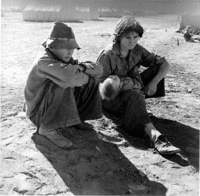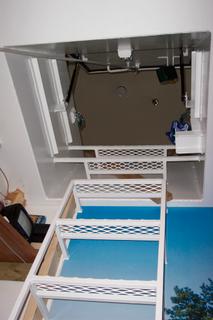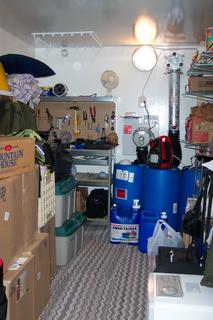 There are a good many people out there who, when faced with the option of preparing for major calamity, literally ask, "Why would I want to survive something like that?"
There are a good many people out there who, when faced with the option of preparing for major calamity, literally ask, "Why would I want to survive something like that?"Indeed, it's a fair question that all of us ought to periodically give some attention to because I think it just might help some folks regain a more balanced footing in their approach to preparedness.
Survivalist Caricature Issues
I tend to avoid use of the word "survivalist" because in the group mind of the general public, it conjures images of extremist behavior and attitudes. I even hate using the word "extremist" because it too carries unfair connotations which, in some cases at least, do good people serious injustice.
Still, on a sidenote--today our world IS all about imagery, reputation, and popular acceptance. Not that everyone admits that or gives in to play by those rules. But if any person, product, movement, or viewpoint is going to get any traction out there today, they're going to need some positive media coverage, a well-organized lobby or PR campaign, and maybe an advertising budget.
The closest thing to any of that the crisis preparedness or survivalist movement has had going for it has probably been the NRA. And obviously, the guns and hunting rights movement is at best a second cousin, twice-removed, from the far wider ranging issues that relate to disaster readiness.
So it's no wonder that up until recently, positive press for "survivalism" has been non-existent. If I would cast any blame for that it would be toward liberal media and education-policy powers who seized the initiative back in the '80s when racist militia groups were an easy target for left-wing anti-gun movements. Since then, the rap largely stuck and even expanded and became more deeply rooted. As an example, Marxist-based factions have gone so far as to become strongly focused on destroying one of the great original preparedness organizations--the Boy Scouts of America.
Like many other traditional, conservative targets out there, crisis-preparedness adherents passively endured (or not, as certainly many shied away from being part of anything controversial) the cheap shots.
But now, recent catastrophes have unavoidably shown the uncommon wisdom in being ready for hell or high water. And at last, we have none other than Uncle Sam footing the bill for disaster readiness PR campaigns. The times they are a changin'.
Still
Some of those in recent years who have maintained the readiness way of life have often, unfortunately, fit the bill in terms of reflecting the image the press has portrayed us all with. You know the stereotype--right-wing, "fundamentalist Christian," white male, reclusive gun-toting conspiracy nut living for the day when society collapses so they can at long last shake their fists and cry "I told you so."
Yes, there are many such characters out there, though I'd have to say that a strong majority of those integrating preparedness into their lives today are NONE of the above.
Thankfully, most folks are able to maintain a healthy balance in their approach to readiness and not go off the deep end. They "blend." They are the guy or girl next door. They are you.
Back to the Question
Why would most people who are striving to be ready for a disaster want to survive it? Seems like a dumb question, but it really is a core issue for many.
Some would say they are survivors. They are tough and bound to fight through whatever life dishes out.
Many do it for love of family.
Others hope to show themselves as being ahead of the curve, somehow smarter than most people, and are ready and anxious to show those others up.
A few quite simply are afraid to die or suffer, and see terrible risks out there all around.
There are a lot of reasons for wanting to survive whatever is coming down the pike. I want to suggest that folks periodically truly look at their own reasons and determine whether they are comfortable with them.
For instance ...
Do you secretly look forward to a collapse of the system, when the slate will be wiped clean and you'll get a fresh start?
Do you trust no one and fearfully guard your mindset and your preparations so that you will not ever have to share of what you believe or the supplies you have stored?
Have you become fearful or suspicious of any type of authority to the point of coming close to filling someone's definition of being a closet anarchist?
Ninety percent of the folks out there will not even have gotten to this point in this blog post before moving on because this all is so far off their reality screen. And that's good. But for the few who feel a twinge--of anger or confusion or sadness--give it some more thought.
My point is that preparing for crisis should not be about selfishness. Or vindictiveness. Or even about fear.
Surviving just to continue breathing seems like such a pointless exercise if we plan on doing it to the exclusion or expense of others. In fact, I have to believe it still means a lot to be an American. We are Americans together, not apart.
So much better it would be on the other side, wouldn't it, if we are able to have done what was needed for all we are in a position to help, while maintaining a high order of principle, just allegiance, personal honor, and faithful conscience?
No?




















